SNAS660D June 2015 – May 2021 LM53600-Q1 , LM53601-Q1
PRODUCTION DATA
- 1 Features
- 2 Applications
- 3 Description
- 4 Revision History
- 5 Device Comparison
- 6 Pin Configuration and Functions
- 7 Specifications
- 8 Detailed Description
- 9 Applications and Implementation
- 10Power Supply Recommendations
- 11Layout
- 12Device and Documentation Support
- 13Mechanical, Packaging, and Orderable Information
Package Options
Mechanical Data (Package|Pins)
- DSX|10
Thermal pad, mechanical data (Package|Pins)
- DSX|10
Orderable Information
9.2.2.3 Application Curves
The following characteristics apply only to the circuit shown in Figure 9-12. These parameters are not tested and represent typical performance only.
Unless otherwise stated, the following conditions apply: VIN =
13.5 V, TA = 25°C.
The following characteristics apply only to the circuit shown in Figure 9-12. These parameters are not tested and represent typical performance only.
Unless otherwise stated, the following conditions apply: VIN =
13.5 V, TA = 25°C.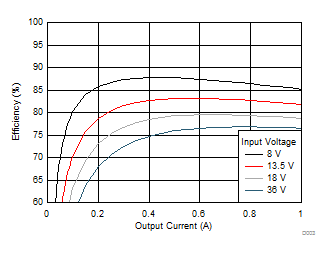
Figure 9-13 Efficiency. The following characteristics apply only to the circuit shown in Figure 9-12. These parameters are not tested and represent typical performance only.
Unless otherwise stated, the following conditions apply: VIN =
13.5 V, TA = 25°C.

| Device Type = 1 A | Mode = FPWM | 3.3-V Fixed Output |
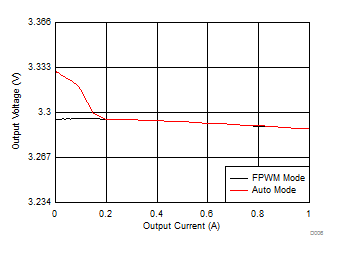
| Device Type = 1 A | 3.3-V Fixed Output | |
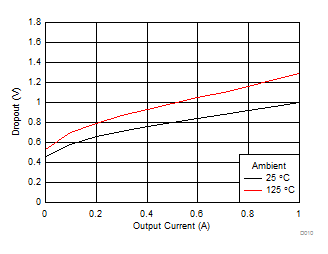
| Device Type = 1 A | 3.3-V Fixed Output | |
| 92-mΩ Inductor | Frequency Drops to 1.85 MHz | |
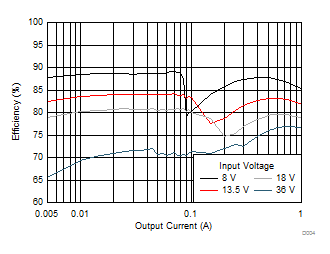
| Device Type = 1 A | Mode = Auto | 3.3-V Fixed Output |
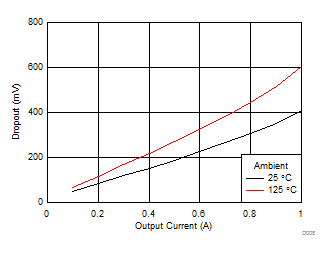
| Device Type = 1 A | Output = 3.2 V | 92-mΩ Inductor |
| 3.3-V Fixed Output | ||
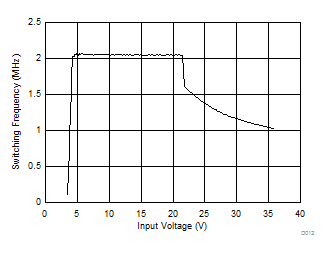
| Device Type = 1 A | Spread Spectrum | |
| 3.3-V Fixed Output | Load = 500 mA | |